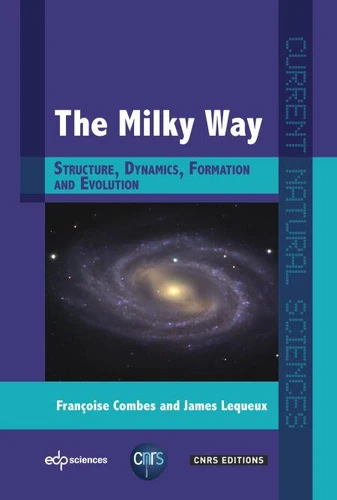Astrophysicienne à l'Observatoire de Paris, directeur de recherche au CNRS, membre de l'Académie des sciences.
The Milky Way. Structure, Dynamics, Formation and Evolution
Par : ,Formats :
Disponible dans votre compte client Decitre ou Furet du Nord dès validation de votre commande. Le format PDF est :
- Compatible avec une lecture sur My Vivlio (smartphone, tablette, ordinateur)
- Compatible avec une lecture sur liseuses Vivlio
- Pour les liseuses autres que Vivlio, vous devez utiliser le logiciel Adobe Digital Edition. Non compatible avec la lecture sur les liseuses Kindle, Remarkable et Sony
 , qui est-ce ?
, qui est-ce ?Notre partenaire de plateforme de lecture numérique où vous retrouverez l'ensemble de vos ebooks gratuitement
Pour en savoir plus sur nos ebooks, consultez notre aide en ligne ici
- Nombre de pages194
- FormatPDF
- ISBN978-2-7598-2001-6
- EAN9782759820016
- Date de parution01/04/2016
- Protection num.Digital Watermarking
- Taille8 Mo
- Infos supplémentairespdf
- ÉditeurEDP Sciences
- PréfacierCatherine Turon
Résumé
Our knowledge of the Milky Way has been deeply renewed since a dozen years, following the results of the astrometric satellite HIPPARCOS, and those of large stellar surveys. Many concepts thought to be well established disappeared, to be replaced by others going towards a larger complexity: in particular, the discovery of radial migrations of stars has blurred the simple image that we had of the Galactic disk.
There has been large progress in some domains, for instance the physics of the Galactic Center with its super-massive black hole; other problems remain unsolved, such as the nature of the dark matter existing like a halo around our Galaxy. This book reviews our present knowledge of the Milky Way, in the simplest and most didactic way as possible. Basic notions are always recalled, which make the book accessible to readers without any advanced formation in astronomy.
This basic work will be very helpful to understand the results expected from GAIA, the new ESA astrometric satellite launched on December 19, 2013.
There has been large progress in some domains, for instance the physics of the Galactic Center with its super-massive black hole; other problems remain unsolved, such as the nature of the dark matter existing like a halo around our Galaxy. This book reviews our present knowledge of the Milky Way, in the simplest and most didactic way as possible. Basic notions are always recalled, which make the book accessible to readers without any advanced formation in astronomy.
This basic work will be very helpful to understand the results expected from GAIA, the new ESA astrometric satellite launched on December 19, 2013.
Our knowledge of the Milky Way has been deeply renewed since a dozen years, following the results of the astrometric satellite HIPPARCOS, and those of large stellar surveys. Many concepts thought to be well established disappeared, to be replaced by others going towards a larger complexity: in particular, the discovery of radial migrations of stars has blurred the simple image that we had of the Galactic disk.
There has been large progress in some domains, for instance the physics of the Galactic Center with its super-massive black hole; other problems remain unsolved, such as the nature of the dark matter existing like a halo around our Galaxy. This book reviews our present knowledge of the Milky Way, in the simplest and most didactic way as possible. Basic notions are always recalled, which make the book accessible to readers without any advanced formation in astronomy.
This basic work will be very helpful to understand the results expected from GAIA, the new ESA astrometric satellite launched on December 19, 2013.
There has been large progress in some domains, for instance the physics of the Galactic Center with its super-massive black hole; other problems remain unsolved, such as the nature of the dark matter existing like a halo around our Galaxy. This book reviews our present knowledge of the Milky Way, in the simplest and most didactic way as possible. Basic notions are always recalled, which make the book accessible to readers without any advanced formation in astronomy.
This basic work will be very helpful to understand the results expected from GAIA, the new ESA astrometric satellite launched on December 19, 2013.

















